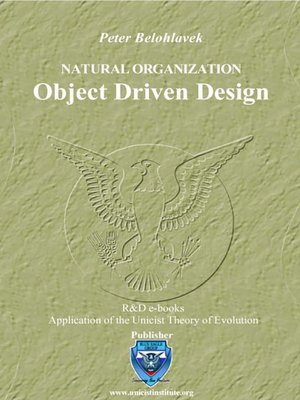
Sign up to save your library
With an OverDrive account, you can save your favorite libraries for at-a-glance information about availability. Find out more about OverDrive accounts.
Find this title in Libby, the library reading app by OverDrive.



Search for a digital library with this title
Title found at these libraries:
| Library Name | Distance |
|---|---|
| Loading... |
The Natural Organization Model is based, as well as Nature, on objects. In this research you will find the structure of objects to be used in organizations and the concepts required to design them.
Globalization, technological advance and the tendency to handle more and more complex systems with an increasing ambiguity level have made it necessary to develop a working processes management technology which would enable the increase of the generated and received added value and the reduction in costs so as to allow a global competition.
This led to the development of organizational metamodels between the years 1981 and 1986 which would allow an organizational design capable of handling both cross-cultural and cultural realities at the same time. Besides, it had to be useful for generating an accuracy rate in relations so that technology could guarantee success and men produced the incremental added value.
That is how the models of Personalized Organization and Client Centered Management were born at the time, which were the cross-cultural models with cultural use to sustain a simultaneous increase in value, productivity and quality.
As a result of the use of the Personalized Organization Model and the Client Centered Management integrated with the Organization Model responding to the business values, the Natural Organization Model was born. Later, the developments of the object oriented systems spread worldwide and they enabled the creation of a bridge between the computer technologies and the organizational developments that boomed as regards object oriented working processes.
Globalization, technological advance and the tendency to handle more and more complex systems with an increasing ambiguity level have made it necessary to develop a working processes management technology which would enable the increase of the generated and received added value and the reduction in costs so as to allow a global competition.
This led to the development of organizational metamodels between the years 1981 and 1986 which would allow an organizational design capable of handling both cross-cultural and cultural realities at the same time. Besides, it had to be useful for generating an accuracy rate in relations so that technology could guarantee success and men produced the incremental added value.
That is how the models of Personalized Organization and Client Centered Management were born at the time, which were the cross-cultural models with cultural use to sustain a simultaneous increase in value, productivity and quality.
As a result of the use of the Personalized Organization Model and the Client Centered Management integrated with the Organization Model responding to the business values, the Natural Organization Model was born. Later, the developments of the object oriented systems spread worldwide and they enabled the creation of a bridge between the computer technologies and the organizational developments that boomed as regards object oriented working processes.







